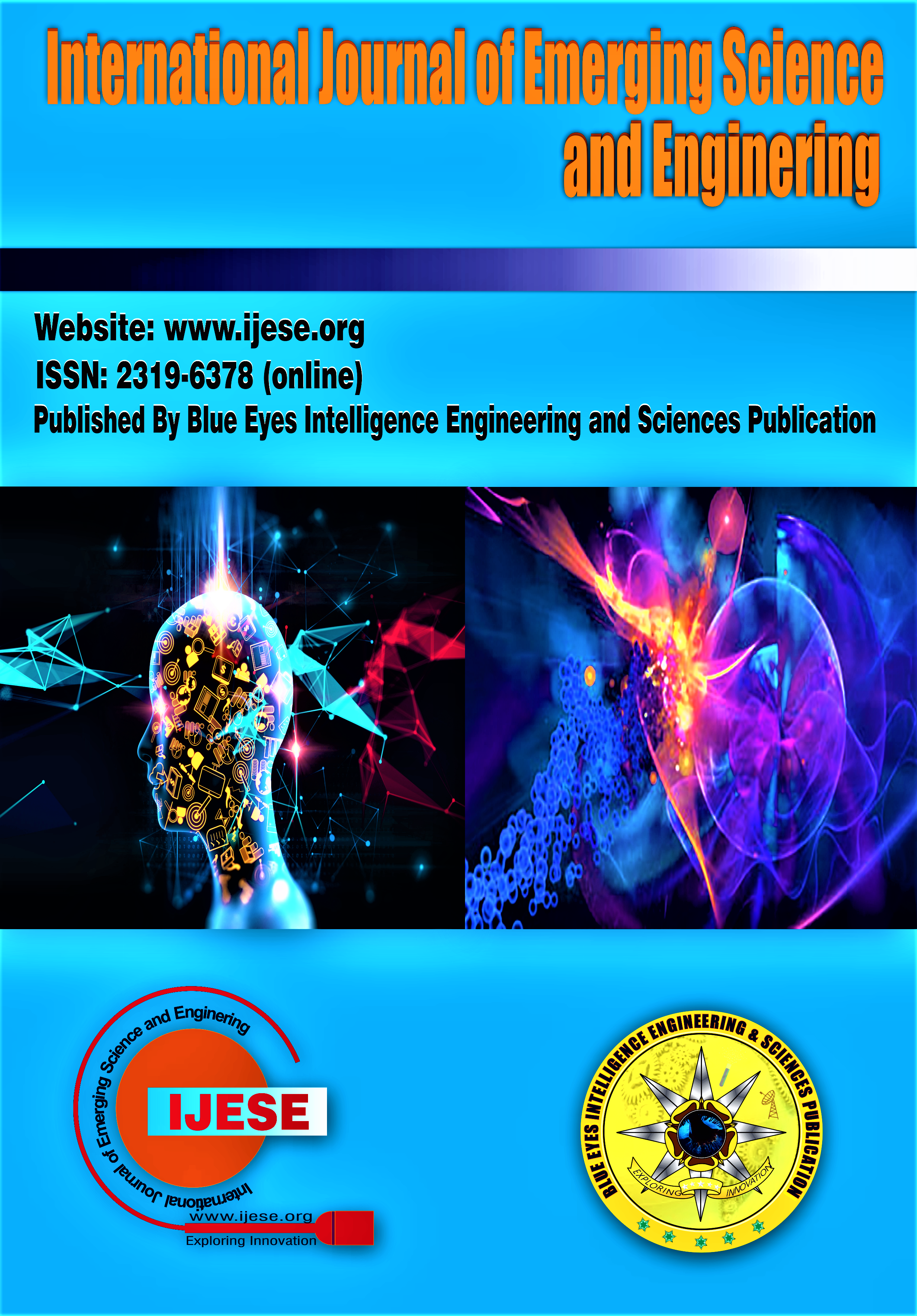Evaluating the Role of STEM Education in Empowering Secondary School Students
Main Article Content
Abstract
In recent years, the global emphasis on STEM (Science, Technology Engineering, and Mathematics) education in secondary schools has grown significantly, driven by the recognition of its pivotal role in preparing students for the complexities of the 21st-century workforce. STEM education transcends traditional disciplinary boundaries, emphasizing critical thinking, problem-solving, and innovation—the cornerstones of technological advancement and economic competitiveness. The present study delves into the relevance of STEM education in secondary schools, exploring its impact on students’ academic development, career readiness, and the broader societal implications. By examining current research, trends, challenges, and future prospects, this investigation aims to provide a comprehensive understanding of how STEM education equips students with essential skills and knowledge to navigate and contribute meaningfully to our increasingly STEM-oriented world. This study was conducted using the survey method with 50 secondary school teachers as the study samples. The data were collected using opinionnnaire and analyzed using quantitative descriptive analysis. The study results revealed that STEM education implemented at secondary school level helped in the development of the higher cognitive abilities of the learners, such as problem solving, critical thinking, creative thinking etc.
Downloads
Article Details
Section

This work is licensed under a Creative Commons Attribution-NonCommercial-NoDerivatives 4.0 International License.
How to Cite
References
Anugrah Ramadhan Firdaus & Galih Dani Septian Rahayu (2019).Effect of STEM-based Learning on the Cognitive Skills Improvement http://ejournal.upi.edu/index.php/mimbar, DOI: 10.17509/mimbar-sd.v6i2.17562
Buyruk, B., & Korkmaz, Ö. (2014). STEM Awareness Scale (SAS): Validity and reliability study. Journal of Turkish Science Education, 11(1), 3-23. https://doi.org/10.12973/tused.10179a Bybee, R. W. (2010). What is STEM education? Science, 329(5995), 996-996. https://doi.org/10.1126/science.1194998
He, Cody. (2022). The Effects of STEM Education on Mathematics, Science, and English Language Development Skills. Journal of Education, Humanities and Social Sciences. 6. 220-228. 10.54097/ehss.v6i.4427
Irfan Topsakal, Sema Altun Yalçın, and Zehra Çakır (2022). The Effect of Problem-based STEM Education on the Students’ Critical Thinking Tendencies and Their Perceptions for Problem Solving Skills. Science Education International 33(2), 136-145 https://doi.org/10.33828/sei.v33.i2.1
Jane Amunga, 2021. "Leveraging technology to enhance STEM Education Amidst the Covid-19 pandemic: An overview of pertinent concerns," Technium Social Sciences Journal, Technium Science, vol. 18(1), pages 40-55, April. DOI: https://doi.org/10.47577/tssj.v18i1.3044
Kenned Y,T and Odell,M.R.L. (2014). Engaging Students in STEM Education. Science Education International Vol. 25, Issue 3, 2014, 246-258. Retrieved from https://files.eric.ed.gov/fulltext/EJ1044508.pdf
Marginson, Simon & Tytler, Russell & Freeman, Brigid & Roberts, Kelly. (2013). STEM: Country comparisons.Rerieved from https://www.researchgate.net/publication/256731063_STEM_Country_comparisons.
Mcdonald, Christine V. (2016). STEM Education: A review of the contribution of the disciplines of science, technology, engineering and mathematics. Science Education International. 27. 530-569.
Sharma, Jyoti & Yarlagadda, Prasad. (2018). Perspectives of ‘STEM education and policies’ for the development of a skilled workforce in Australia and India. International Journal of Science Education. 40. 1-24. 10.1080/09500693.2018.1517239.
Stohlmann, M., Moore, T. J., & Roehrig, G. H. (2012). Considerations for Teaching Integrated STEM Education. Journal of Pre-College Engineering Education Research (J-PEER), 2(1), Article 4. https://doi.org/10.5703/1288284314653
Suji Ardianti , Dwi Sulisworo , Yudhiakto Pramudya , Widodo Raharjo (2020). The Impact of the Use of STEM Education Approach on the Blended Learning to Improve Student's Critical Thinking Skills. Universal Journal of Educational Research, 8(3B), 24 - 32. DOI: 10.13189/ujer.2020.081503.
Suji Ardianti , Dwi Sulisworo , Yudhiakto Pramudya and Widodo Raharjo (2020). The Impact of the Use of STEM Education Approach on the Blended Learning to Improve Student's Critical Thinking Skills. Universal Journal of Educational Research, 8(3B), 24 - 32. DOI: 10.13189/ujer.2020.081503.
Ugraş, M., and Genç, Z. (2018). Investigating Preschool Teacher Candidates’ STEM Teaching Intention and the views about STEM Education. Bartın University Journal of Faculty of Education, 7(2), 724-744. https://doi.org/10.14686/buefad.408150
Wu, CH., Liu, CH. & Huang, YM. The exploration of continuous learning intention in STEAM education through attitude, motivation, and cognitive load. IJ STEM Ed 9, 35 (2022). https://doi.org/10.1186/s40594-022-00346-y
Xie, Y. et al. STEM Education. Annu. Rev. Sociol. 41, 331-357 (2015) doi: 10.1146/annurev-soc-071312-145659
Sunnatovich, T. D. (2019). Development of Ideological Competence in Secondary School Students. In International Journal of Innovative Technology and Exploring Engineering (Vol. 9, Issue 2, pp. 789–783). https://doi.org/10.35940/ijitee.b6887.129219
Mathialahan, V., Govindarajan, Dr. K., Nandhakumar, R., T, B., & Sivannatham, R. (2020). Emotional, School Environment and Intelligence Academic Achievement of Secondary School Students. In International Journal of Recent Technology and Engineering (IJRTE) (Vol. 8, Issue 5, pp. 2651–2657). https://doi.org/10.35940/ijrte.e5770.018520
Saleh, S., Ashari, Z. M., Kosnin, A. M., Rahmani, A. S., & Zainudin, N. F. (2019). Role of Grit in Secondary School Students’ Academic Engagement and Performance: A Meta-Examination. In International Journal of Engineering and Advanced Technology (Vol. 8, Issue 6s3, pp. 445–451). https://doi.org/10.35940/ijeat.f1081.0986s319
Mwangi, P. N., Muriithi, C. M., & Agufana. (2022). Development of Educational Robotics Activities for Secondary School Students to Promote Interest in Engineering Career Path. In International Journal of Soft Computing and Engineering (Vol. 12, Issue 3, pp. 12–19). https://doi.org/10.35940/ijsce.c3580.0712322
Omar, M. S., & Awang, M. I. (2020). The Relationship between of the Learning Environment and the Higher Order Thinking Skills (HOTS) among Secondary School Students. In International Journal of Management and Humanities (Vol. 4, Issue 5, pp. 46–51). https://doi.org/10.35940/ijmh.e0503.014520





